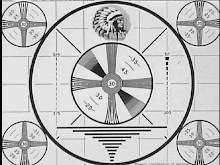What do you do when your team hasn’t contended for years, and perhaps you have the sorry distinction of having provided your former team owner as Commissioner of Baseball? Open the gates of the stadium to everyone for the last game of the season and let everyone in free. Milwaukee ranks about in the middle of attendance at home games (2,176,669), 18th overall, and about 65% of sell-out capacity. It’s no surprise that the Yankees and Dodgers (well maybe this is surprising) are numbers 1 and 2 in attendance. The Yankees pull in 87% of stadium capacity for season home games. The best percentages are in Chicago (Cubs) 98%, and Boston at 97%. It’s no surprise that both Florida teams and Kansas City occupy the bottom.
There were no no-hit games in 2005, and only 3-20 game winners.
There were only about 10 teams remotely in contention for the post-season last week, but all 30 teams continue playing to win. Base has attended quite a few of these so-called meaningless games in September. One late September night Base saw Vida Blue pitch his last major league game at Candlestick Park. Night game fans in the left field bleacher seats that managed to weather a complete game were periodically rewarded with the Croix de Candlestick. A cheap medal envied, but unobtainable by those that could afford the box seats.
Sport promotion is an unusual and (low-paying) demanding job. Entice the fans to come to the park. Giveaways make you feel better about spending $12 - $50 for mediocre seats to a game. Base likes his games a little above and beyond 3rd base, but often takes a roaming approach. Modern parks are designed to discourage this though. Field levels have a lot of security now, since they cater to corporate reserves. Third base side offers a lot of foul ball opportunities statistically, and is a good place to talk about baseball during the game. You can focus on the action when there is real scoring opportunity. Behind first base you have to pay a lot more attention to the action. Outfield seats are also good for conversations, but the view and perspective is more general. The ballet of movement during a play is much more evident from the outfield. Defensive moves in any given situation become clear to the observer. Players drill for situations, as do the cameramen. There is actually a manual for camera operators which tells them (for instance) that with one out and a runner on 2nd base, a hit to the outfield will likely involve action of interest at 3rd or home plate.
Older folks may recall the most famous unfortunate promotion in sports history (June ’74). a 10-cent Beer Night at Municipal Stadium filled to capacity. It got ugly quickly. By the 5th inning a riot broke out. Visiting team outfielders were continuously doused with beer from the start. A few ugly actions by the visiting Texas Rangers against the hometown Indians incited the crowd. Fans (?) were throwing everything portable onto the field, and finally spilled onto the field themselves. The Rangers had to rescue their left fielder during the 9th inning brawl. The umpires finally ruled the game a forfeit by Cleveland. Players, crews and umpires ran for their lives. Ironically, the Rangers (formerly the Washington Senators) were the last team to forfeit a game, as fans seeking souvenirs from the departing team ripped out everything that wasn’t bolted down, and finally poured out onto the field. Base gives equal blame to sport fans for bad behavior.
Fortunately baseball is a fairly genteel sport. Players do get seriously injured in the course of play, and in one instance an umpire died during a game. During the opening game of the 1995 season, umpire John McSherry collapsed and died behind home plate in Cincinnati. Statistics on umpires reveal that the average lifespan of an umpire is 67.77 years among deceased umpires. The youngest death age is 35, and the oldest 95. The average career length of major league umpires is 9.30 years (lowest 5 and longest 37). McSherry’s death was attributed to lack of conditioning (heart attack). He was fat. The day was hot.
No players have died on field, or as a direct result of a baseball injury. One of the most dramatic examples of career ending injuries was Dave Dravecky, with the San Francisco Giants. During the 10th year of his career as a major league pitcher he was diagnosed with a cancerous growth in his right shoulder. He recovered from surgery to remove the tumor. Remarkably he was medically approved to resume his career as a pitcher with the Giants. During his second start his arm separated from is shoulder, literally held only by strands of tissue, ligament, and jersey.
Most career diminishing or ending injuries involve pitchers being hit in the head by batted balls. A 90 mph fastball travels at 132 feet per second. This means that it arrives at home plate in about .5 seconds. The hit ball travels at about the same speed (or faster) back to the pitching mound. This means the whole transaction happens in about a second. Videotape is recorded and transmitted at 30 frames per second. That’s more than enough to provide you with the illusion of full motion. Film is captured at 24 frames per second, also enough to suggest to human optics a smooth illusion. What we actually see on TV is the position of the ball once every 2 feet as it travels to the plate. What clever microphone and camera placement do we anticipate from Fox as they take over post-season coverage this year?
Subscribe to:
Post Comments (Atom)


No comments:
Post a Comment